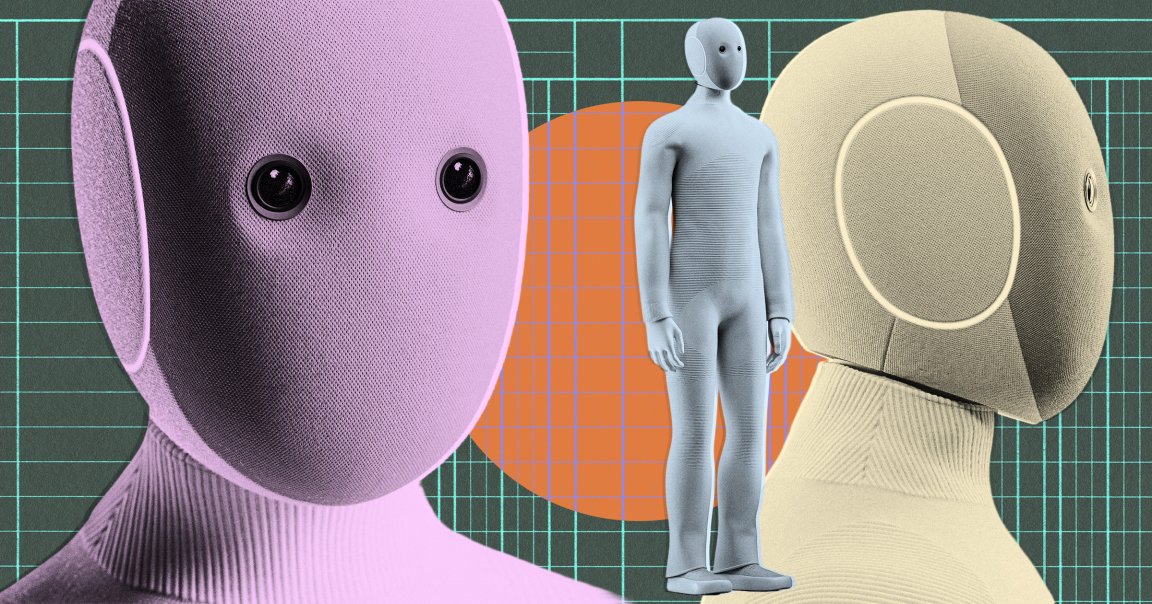
The year is 2026. You’ve been tearing your hair out keeping up with your 1,800 square foot Bay Area bungalow: picking up items and setting them back down, turning lights on and off, and even opening doors has become too much of a burden.
That’s when it arrives: a big bulky box on the front porch. You quickly drag it in off the stoop and into the living room. Tearing open the package reveals your NEO robot from Palo Alto-based startup 1X, a dull tan bipedal machine with a knitted covering and two beady little eyes. You gaze at its sock puppet visage. $20,000 worth of chore-saving robotics in the flesh.
And then you remember: the NEO chorebot isn’t autonomous at all. There’s a human at the other end of those flat doll peepers.
This is the sad reality that will be facing many deep pocketed tech enthusiasts when the NEO starts shipping next year. The machine, as detailed by Fast Company, is currently in the preorder phase of production. Weighing 66 pounds and standing five foot six, the NEO comes in various mossy shades like tan, gray, and dark brown. Users can reserve a preorder spot for just $200, and then either pay a subscription fee of $499 a month, or a one-time buy-it-forever fee of $20,000.
NEO is the brainchild of 1X founder and CEO Bernt Børnich, a young tech guru from Norway. The fabric-wrapped butler bot is a product of his conscious effort to steer clear of the “hard, dark, sci-fi future” that he says dominates so much of the robotics industry. Instead, he’s blazing his own dystopia.
As Engadget noted, NEO will primarily be operated via remote workers. To start, owners will have to register for an app on their phones, from which they can schedule tasks they want the bot to complete. In other words, anyone who wants a NEO in their house is going to have to get comfortable with a stranger peeping around every nook and cranny.
“If we don’t have your data, we can’t make the product better,” Børnich admitted in an interview with the Wall Street Journal. He added that on top of teleoperations, the machine will be gathering data from your house to train its AI software, so that — in theory — it’ll be able to perform tasks autonomously in the future.
But what the future holds for NEO is difficult to say. The robot’s limitations make it painfully obvious that the Jetsons-style robot butler is still a long way away, if indeed we ever see it within our lifetimes. As tech and business journalist Michael Hiltzik points out, even the most cutting edge humanoid robots struggle with basic tasks like navigating home environments or safely handling dishware.
In reality, projects like Tesla’s Optimus or 1X’s NEO are less about practical consumer robotics and more about cashing in off of technological hype. While the industry is capable of breathtaking progress — as China’s rapid dominance in industrial robotics shows — the field of humanoid robotics remains a playground for bag-chasing tech founders. Which means for now, your best bet to finish those chores will be a pair of human hands.
More on robotics: Secret Plans Reveal Amazon Plot to Replace 600,000 Workers With Robot Army